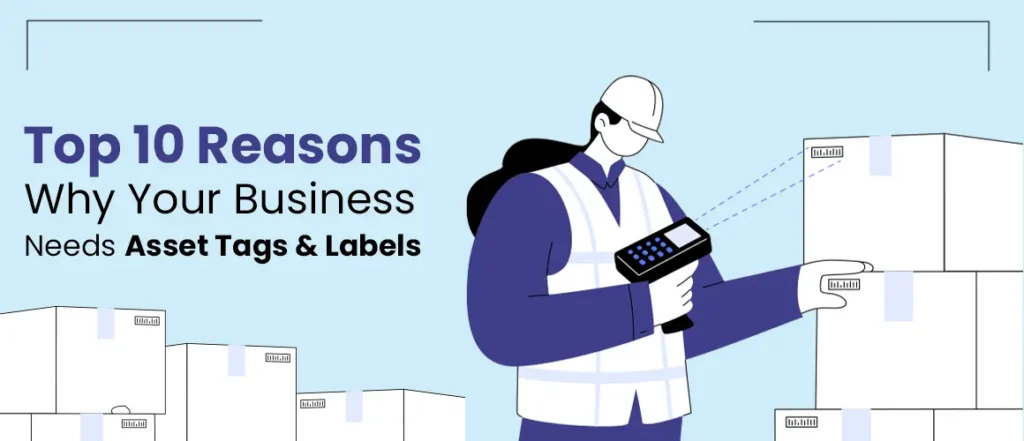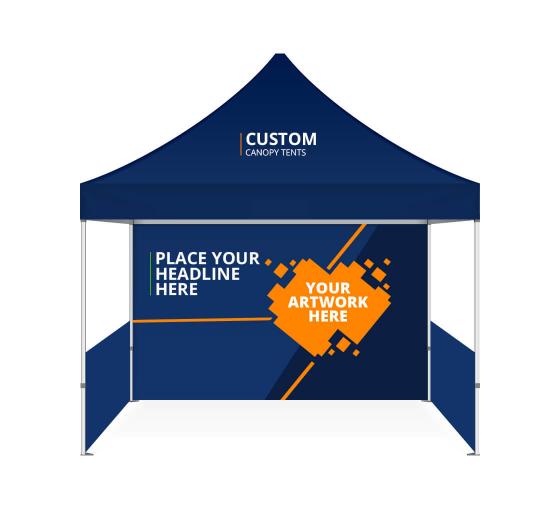
In modern business operations, the role of asset tags and labels cannot be overstated. These tools serve as essential components in managing and safeguarding your company’s assets, offering many benefits that enhance efficiency, security, and compliance. Whether you’re a small business or a large enterprise, here are compelling reasons why investing in asset tags and labels is crucial for your success.
Everything to Know About Metal Asset Tags
Among the array of options available, metal asset tags stand out for their durability and versatility. Typically crafted from materials like aluminium, these tags and stickers are designed to withstand challenging environments while providing robust identification and tracking capabilities. They are essential for industries where durability and longevity are critical, such as manufacturing, logistics, and outdoor services.
When selecting asset tags and labels, consider factors such as material durability, adhesive strength, and customisation options. How to choose the right asset tags and labels involves matching tags to your asset’s environment, whether indoor or outdoor, and ensuring they adhere securely to various surfaces. Customisable features like barcode integration or QR codes can significantly enhance asset management efficiency.
Why Your Business Needs Asset Tags & Labels
In this section, we will explore the top ten reasons why asset tags and labels are indispensable for any business. From enhancing security to optimising resource allocation, these tools offer a wide range of benefits that can transform your operations and ensure the protection and efficient management of your assets.
1. Efficient Asset Tracking and Inventory Management

Asset tags streamline the process of tracking equipment and inventory items. By assigning unique identifiers such as serial numbers or barcodes, businesses can monitor the movement of assets throughout their lifecycle. This capability not only reduces the likelihood of misplaced items but also optimises inventory management processes.
For example, in a warehouse setting, asset tags can help track the exact location of each item, making it easier to manage stock levels and reorder supplies as needed. In healthcare, asset tags on medical equipment ensure that devices are accounted for and available when required.
2. Enhanced Security and Loss Prevention
Tags and labels act as visible deterrents against theft and unauthorised asset transfers. They make it easier to identify missing assets quickly and facilitate recovery efforts. This heightened security measure instils confidence in stakeholders and protects valuable company resources.
For example, schools and universities can use asset tags to manage and secure laptops and tablets issued to students. The visible tags deter theft, and in the event of a loss, the unique identifiers help in tracking and recovering the devices.
3. Compliance with Regulatory Standards
Many industries are subject to stringent regulatory requirements concerning asset management and safety. Properly labelled assets ensure adherence to these standards, mitigating the risk of non-compliance penalties and legal repercussions.
For example, in the pharmaceutical industry, regulatory bodies require precise tracking of equipment and materials to ensure safety and efficacy. Asset tags facilitate this by providing a reliable way to track and document the usage and maintenance of critical assets.
4. Improved Maintenance and Service Management
Asset tags can include maintenance schedules and service histories, facilitating proactive upkeep and reducing equipment downtime. This approach not only extends the lifespan of assets but also enhances operational efficiency by ensuring that equipment is consistently maintained at optimal performance levels.
For example, in the aviation industry, where safety is paramount, asset tags help track maintenance schedules of aircraft components, ensuring that they are serviced regularly, and any potential issues are addressed promptly.
5. Facilitated Warranty and Insurance Management
Properly labelled assets simplify the process of validating warranties and processing insurance claims. By maintaining accurate records and documentation through asset tags, businesses can expedite claims resolution and ensure comprehensive coverage for their assets.
For example, in the IT industry, companies can use asset tags to track hardware warranties and service contracts, ensuring that repairs and replacements are covered under warranty and reducing out-of-pocket expenses.
6. Streamlined Audits and Asset Verification
During audits or inspections, labelled assets expedite the verification process by providing clear identification and documentation. Auditors can quickly assess asset existence, condition, and location, thereby minimising disruptions and optimising audit efficiency.
For example, in the hospitality industry, hotels can use asset tags to manage and audit their extensive inventories of linens, electronics, and furniture, ensuring that all items are accounted for and in good condition.
7. Optimised Resource Allocation

Clear asset labelling enables businesses to identify underutilised or surplus assets, allowing for more effective resource allocation. By reallocating resources based on accurate asset data, companies can maximise operational efficiency and reduce unnecessary expenditures.
For example, in the manufacturing industry, asset tags help track the usage of machinery and equipment, identifying underutilised assets that can be reassigned to other production lines to increase productivity.
8. Enhanced Customer Service and Satisfaction
Efficient asset management translates into improved customer service experiences. Access to real-time asset information enables businesses to respond promptly to customer inquiries and service requests, fostering stronger customer relationships and higher satisfaction levels.
For example, in the telecommunications industry, asset tags on network equipment enable quick identification and troubleshooting of issues, ensuring minimal downtime and prompt service restoration for customers.
9. Effective Supply Chain Management
Asset tags facilitate seamless integration into logistics and supply chain operations by providing visibility into asset movements and locations. This transparency ensures timely deliveries, minimises operational delays, and enhances overall supply chain efficiency.
For example, in the retail industry, asset tags help track products from the warehouse to the store shelves, ensuring that inventory levels are maintained, and customers can find the products they need.
10. Cost Savings and Return on Investment (ROI)
Investing in asset tags and labels yields substantial cost savings and ROI over time. By reducing asset losses, optimising maintenance costs, and enhancing operational efficiencies, businesses can achieve significant financial benefits that contribute to long-term profitability and sustainability.
For example, in the construction industry, asset tags help track tools and equipment across multiple job sites, reducing the risk of loss and ensuring that assets are utilised efficiently, ultimately saving money on replacements and improving project timelines.
Conclusion: Need to Know Before Buying Asset Tags & Labels
Asset tags and labels are indispensable tools for modern businesses seeking to streamline operations, enhance security, and ensure compliance with regulatory standards. Whether you choose metal asset tags for their durability or opt for customisable labels to meet specific operational needs, investing in effective asset management solutions is essential for maximising efficiency and protecting valuable company assets.
By understanding the role of asset tags and labels, you can harness their full potential. Knowing about metal asset tags is also crucial. Additionally, choosing the right tags tailored to your business needs will help streamline operations and safeguard your investments effectively.
Before buying asset tags and labels, it’s important to consider the specific needs of your business. This involves evaluating the materials, customization options, and durability required for your environment. By doing so, you ensure that you select the most effective solutions to support your asset management and operational goals.
Written By BannerBuzz Editorial Team.


























 Posted in
Posted in 












